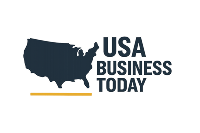As 2025 heads into its final stretch, the U.S. Federal Reserve finds itself balancing on a narrow economic ledge. Inflation has cooled from its post-pandemic peaks but remains above target; growth is slowing but not collapsing; and global uncertainty—from China’s sluggish rebound to Europe’s stagnation—makes every policy meeting a potential market-mover. For executives, board members, and investors, understanding the Fed’s likely trajectory is more than an intellectual exercise; it’s a crucial input into planning capital expenditures, debt strategies, and hiring decisions.
Inflation: Cooling but Not Conquered
Headline inflation has drifted down from its multi-decade highs of 2022–23, but the story isn’t uniform. Goods prices have softened as supply chains normalize, but core services inflation—particularly housing and healthcare—remains sticky. This is the metric Fed Chair Jerome Powell and his colleagues have flagged repeatedly; until it reliably returns to around 2%, rapid rate cuts are unlikely.
One complicating factor: shelter inflation lags real-time housing data. Rent increases that already slowed earlier this year are only now showing up in official figures. That delay gives hope to dovish observers that core inflation will keep easing into early 2026. But Powell’s mantra—“data-dependent and patient”—signals the Fed won’t pre-commit to cuts.
For business leaders: plan around borrowing costs staying higher than the pre-pandemic era. Don’t count on ultra-cheap capital to return soon. If you rely heavily on floating-rate debt, consider hedging or refinancing while markets remain relatively calm.
Growth: Slowing but Resilient
GDP growth has cooled from the unsustainably strong rebounds of 2023–24, but talk of an outright recession hasn’t materialized. Consumer spending—especially in services and travel—remains surprisingly robust. The labor market, while less frenetic, still shows unemployment near historical lows, and wage growth is moderating but remains positive in real terms.
Corporate earnings have been mixed: large multinationals with pricing power and diversified supply chains are weathering the environment well, while highly leveraged or purely domestic firms are feeling margin pressure.
For executives: this is a moment for disciplined but not defensive planning. Preserve liquidity, but don’t halt strategic investment. Companies with healthy balance sheets can use slower growth periods to capture market share, upgrade technology, and recruit talent at more sustainable wage levels.
Rates: Stability Likely Through Mid-2026
Financial markets currently price in one or two small rate cuts by mid-2026, but the Fed itself has sounded more cautious. Policymakers want to see inflation convincingly below 3%—preferably near 2%—before taking their foot off the brake. Their September meeting minutes underscored “uncertainty about the neutral rate,” meaning the Fed isn’t sure how high rates need to stay to cool demand without tipping the economy.
A “higher-for-longer” scenario is still plausible. While no one expects a return to 2022’s aggressive hikes, executives should plan for the federal funds rate to remain above the long-term 2–2.5% average well into 2026.
For CFOs and treasury teams: this environment rewards proactive debt management. Lock in fixed rates where possible. Consider laddering maturities to avoid refinancing cliffs. Evaluate interest rate hedges for floating-rate exposure.
The Global Dimension: Currency & Supply Chain Risks
The Fed doesn’t operate in a vacuum. The U.S. dollar has strengthened in 2025 as investors seek safety amid Europe’s stagnation and China’s uneven recovery. A strong dollar dampens U.S. exports and corporate profits abroad but helps keep imported goods cheaper, supporting the inflation fight.
Energy markets remain a wild card. Renewed Middle East tensions and unpredictable OPEC+ output could jolt oil prices, feeding inflation and complicating the Fed’s calculus. Meanwhile, climate-related disruptions—from shipping through the Panama Canal to flooding in Asia—are reminders that supply chain fragility persists.
For multinational executives: diversify suppliers, hedge key currencies, and build flexibility into logistics. If your cost structure is sensitive to the dollar or energy inputs, scenario-plan now.
Risk Scenarios: What Could Shift the Fed’s Path
- Inflation Re-acceleration: A surge in energy or shelter costs could push inflation back up, delaying cuts and possibly triggering another hike.
- Hard Landing: If job losses mount faster than expected and demand falters, the Fed might cut aggressively to support growth.
- Financial Instability: Stress in regional banks or corporate credit markets could force earlier easing, even if inflation isn’t fully tamed.
- Global Shock: Escalating geopolitical risk or severe supply disruptions could either stoke inflation or cause global slowdown—both scenarios force Fed recalibration.
For leaders, each of these paths implies different funding and capital allocation strategies. The takeaway isn’t to predict the future but to plan for range.
Strategic Playbook for Business Leaders and Investors
- Liquidity Is a Strategic Asset
Maintain healthy cash buffers or undrawn credit. Higher-for-longer rates make refinancing expensive; having reserves keeps you agile. - Fixed Over Floating
Where feasible, refinance short-term variable debt into longer-term fixed at today’s still-manageable levels. - Scenario-Based Forecasting
Build at least three models: baseline (Fed holds rates), upside (cuts begin mid-2026), and downside (another hike or hard landing). Align hiring, expansion, and M&A to those triggers. - Currency & Commodity Hedging
A strong dollar may not last; sudden reversals could hit overseas earnings. Energy-sensitive businesses should model $20 swings in crude prices. - Invest in Productivity, Not Just Cuts
Historically, firms that continue to digitize, automate, and upskill during slowdowns outperform when growth resumes. - Talent Strategy
Cooling labor markets create an opportunity to hire and retain key performers at sustainable costs. - M&A Window
Valuations may remain compressed; buyers with capital can acquire at discounts before rates fall and competition heats up again.
Historical Perspective: Lessons from Past Cycles
The Fed’s current playbook echoes past “mid-cycle pauses” — like the mid-1990s when Alan Greenspan managed to slow inflation without causing recession. But history also warns against overconfidence: in the late 1970s, premature easing reignited inflation. Powell’s Fed seems determined to avoid that mistake, which explains their patience.
For modern leaders, that means respecting interest rate risk but not freezing innovation. Firms that froze in previous slowdowns often lost share to competitors who invested selectively.
Investor Lens
For investors, the environment suggests a balanced stance:
- Equities: Quality matters. Strong balance sheets and pricing power can weather slow growth and elevated rates better than speculative growth stocks.
- Fixed Income: Yields remain attractive; laddering maturities can capture today’s rates while preserving flexibility if cuts come.
- Alternatives: Private credit and infrastructure may benefit from higher borrowing costs pushing middle-market firms toward non-bank financing.
Avoid betting everything on one macro outcome. Diversification is the simplest hedge against Fed uncertainty.
Prepare, Don’t Predict
The Federal Reserve’s late-2025 stance is one of careful watchfulness. Inflation is bending lower but not broken; growth is slowing but not collapsing. For executives and investors, the right move isn’t guessing what the Fed will do next—it’s structuring balance sheets and strategy to thrive under multiple possible paths.
Strong liquidity, disciplined capital planning, and selective investment in productivity will separate resilient enterprises from reactive ones. Those who build optionality now will have the confidence to act decisively—whether the Fed cuts early, holds steady, or surprises markets again.





